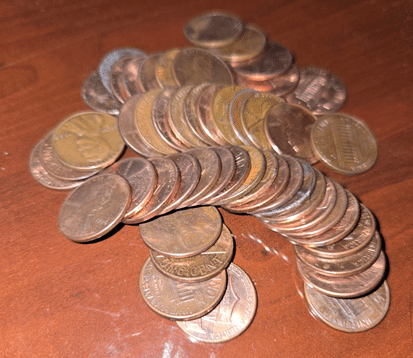
From penny press to penniless: The possible cease in penny production
Colby Craig, Staff Writer
On Feb. 9, 2025, President Donald J. Trump instructed the secretary of the treasury to halt the production of all pennies due to the cost of each coin.
In his statement, he wrote, “For far too long the United States has minted pennies which literally cost us more than 2 cents. This is so wasteful!”
His effort to stop the production of pennies is troubling some, but this effort has been made in the past. In 1990, Jim Kolbe, a United States representative, tried to implement a fix for the wastefulness of the penny as well.
Kolbe’s suggestion was to implement rounding rules where businesses were required to round to the nearest five cents when making a transaction. The plan ultimately failed when most states did not implement the change.
The outcome to this recent penny problem is unknown, but many wonder if it will end up the same way.
The penny has been a staple part of the United States currency for a very long time, but how many people actually know its history?
The penny, otherwise known as the cent, was created in 1787, supposedly by the suggestion of Benjamin Franklin. It was made to represent 0.01 within the currency, meaning that it would be considered one hundredth of a U.S. dollar.
It has undergone many changes to its design and the materials used to make them.
The penny was not always the smallest unit of United States currency, but it did finally become the smallest when the half-cent was removed from circulation. The half-cent was established and produced from 1793 to 1857, and it was equivalent to two hundredths of a dollar.
It was very similar to a penny but had a different design, size and obviously different values. It was made from 100% copper like the first few iterations of the penny, but the size was comparable to that of a modern quarter.
When the half-cent was done away with, the penny reduced in size and was eventually made with less copper. The modern penny is made with 97.5% zinc and plated with 2.5% copper.
In modern times, it costs approximately 3.7 cents to make one penny. The price for the materials before 2010 was much lower, but the copper that is used to make pennies is much more valuable to other markets than for U.S. currency.
Computers, phones, water pipes, heating and air units, medical devices and transportation all use copper in different ways, which made the material much more expensive.
On top of the large price that comes with pennies, what is their actual utility? Is there anything a consumer can actually buy with it? The short answer is no, but the explanation is a bit more complex.
A few things that consumers could have bought a long time ago with a single penny would have been a piece of candy, a newspaper, stamps and other small items. Nowadays, there is virtually nothing that can be bought with a penny.
To add another layer, there is a chance that someone would refuse to accept pennies for larger purchases and that is entirely legal. Business owners are able to refuse sales for a reason such as that, and the consumer cannot do anything about it.
